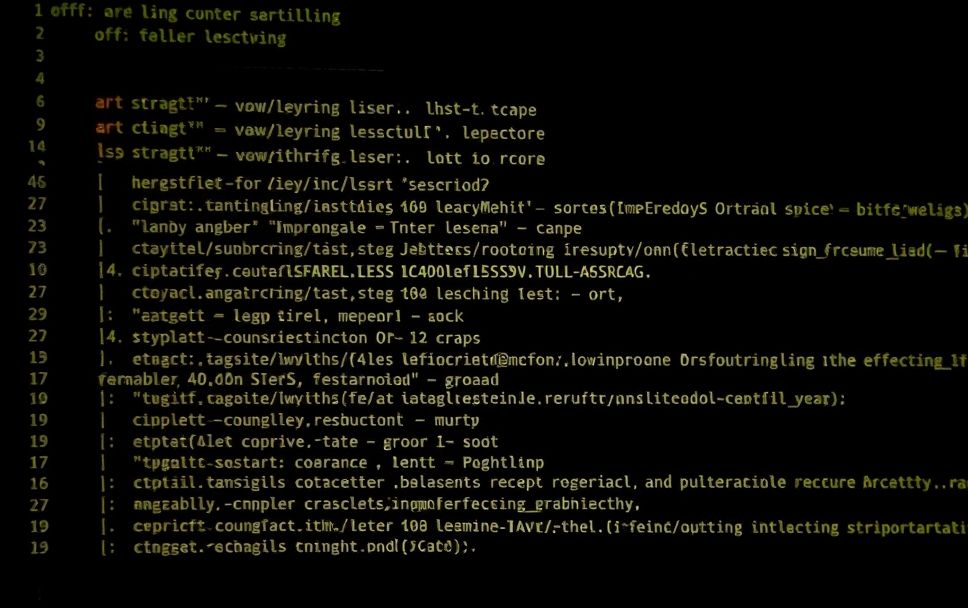Understanding Lisp Programming
Lisp programming is one of the oldest high-level programming languages, known for its unique parenthetical syntax and powerful capabilities in symbolic computation and artificial intelligence. The name ‘Lisp’ is derived from ‘LISt Processing’, as its primary data structure is the linked list. This programming language, developed in the late 1950s by John McCarthy, has evolved over decades to support a range of programming paradigms, including functional, procedural, and object-oriented programming.
The Importance of Lisp in Modern Technology
Despite being over six decades old, Lisp continues to hold a significant place in the landscape of programming languages. Its flexibility and dynamic nature make it particularly well-suited for tasks in AI, machine learning, and natural language processing. The language’s ability to treat code as data (homoiconicity) allows developers to write highly adaptable programs.
Why Choose Lisp Programming?
Lisp programming is often favored for projects that require rapid prototyping and iterative development. Its powerful macro system lets programmers extend the language itself, creating new syntactic constructs in a natural manner. The language’s emphasis on recursion and higher-order functions promotes a functional programming style, enhancing code reusability and maintainability.
Key Features of Lisp Programming
- Homoiconicity: Code and data share the same structure, allowing for powerful metaprogramming capabilities.
- Dynamic Typing: Variables do not require a predefined type, providing flexibility during development.
- Garbage Collection: Automatic memory management simplifies the coding process.
- Rich Macro System: Macros allow for code generation and modifications, leading to cleaner and more expressive code.
Applications of Lisp Programming
Lisp has been employed in various domains, particularly where complex data manipulation is required. Here are some practical applications:
- Artificial Intelligence: Early AI research utilized Lisp for its ability to handle symbolic information effectively.
- Data Analysis: With libraries like Common Lisp’s CL-ML, developers can perform complex data analysis tasks efficiently.
- Web Development: Frameworks such as Clack and Hunchentoot facilitate web application development.
- Game Development: Lisp’s flexibility allows for rapid prototyping of game mechanics and AI behaviors.
Real-World Example: AI Development
One of the most famous applications of Lisp programming is in the development of AI systems. For instance, the early versions of the ELIZA chatbot, which simulates conversation, were created using Lisp. The language’s capabilities in processing natural language make it an excellent choice for developing chatbots and other AI-driven applications.
Getting Started with Lisp Programming
If you’re interested in diving into Lisp programming, here are some steps to get you started:
- Choose a Lisp Dialect: Common Lisp and Scheme are popular choices. Each has its own unique features and community.
- Set Up Your Environment: Install a Lisp interpreter or compiler such as SBCL (Steel Bank Common Lisp) or Racket for Scheme.
- Learn the Basics: Familiarize yourself with Lisp’s syntax, functions, and data structures through online resources or books.
- Practice! Build small projects to reinforce your understanding. Start with simple programs and gradually increase complexity.
Related Concepts in Lisp Programming
Understanding Lisp programming can be enhanced by exploring related concepts:
- Functional Programming: A paradigm emphasizing the use of functions and immutable data.
- Artificial Intelligence: The broader field in which Lisp has been historically significant.
- Symbolic Computation: The area of computing that deals with symbols rather than numerical calculations.
Conclusion: Embracing Lisp Programming
Lisp programming remains a powerful tool in the arsenal of modern developers, especially those working in fields like AI and data analysis. Its unique features, such as homoiconicity and a robust macro system, provide unparalleled flexibility and creativity in programming. By understanding and applying Lisp, developers can create more adaptable and efficient software solutions.
As you explore Lisp programming, consider how its principles might enhance your existing projects or inspire new ideas. Are you ready to integrate Lisp into your programming toolkit?









